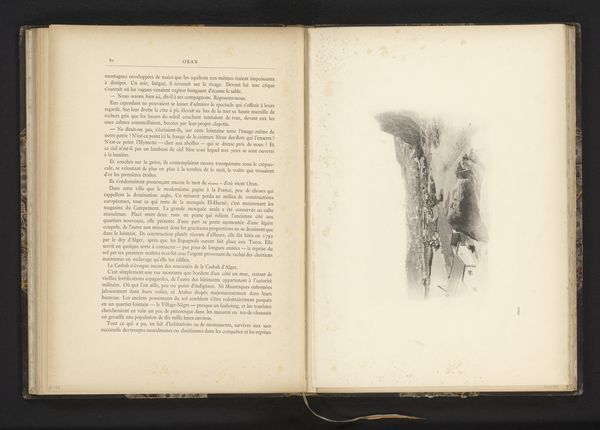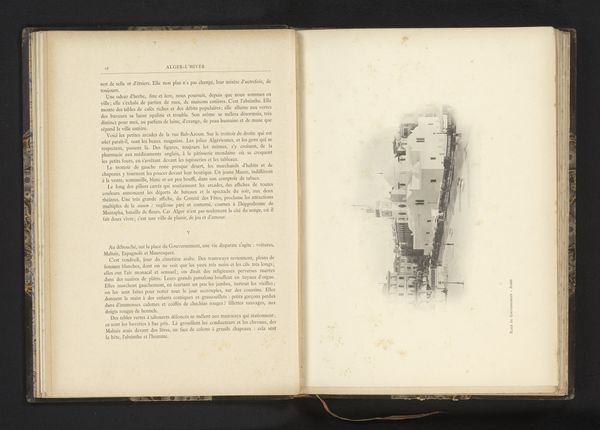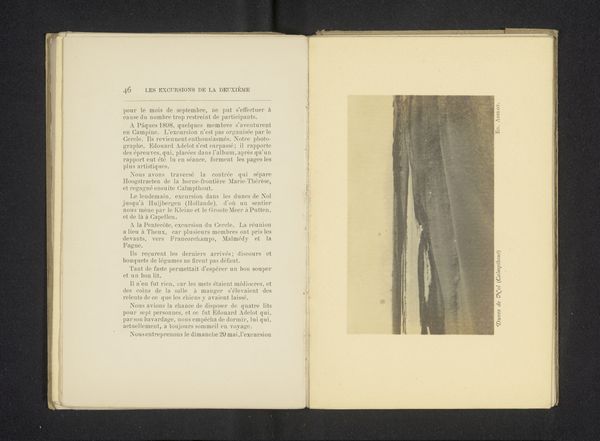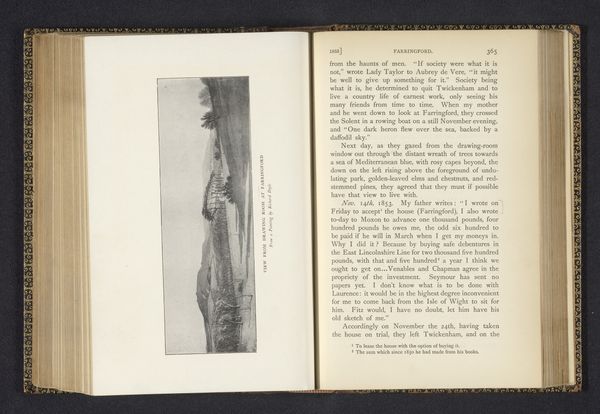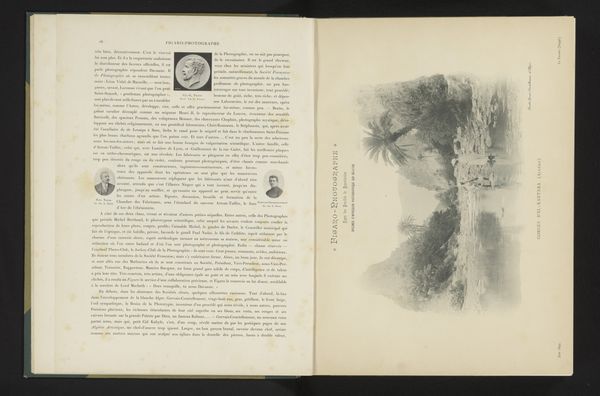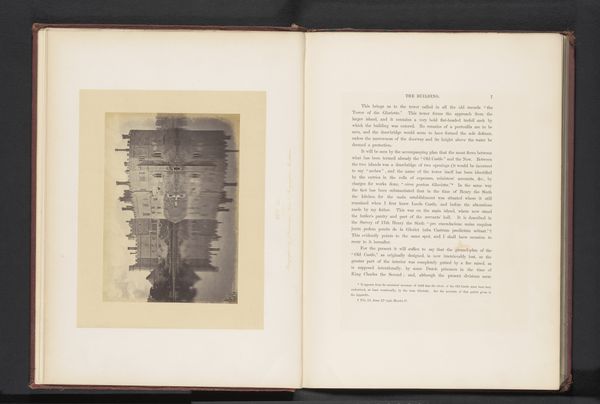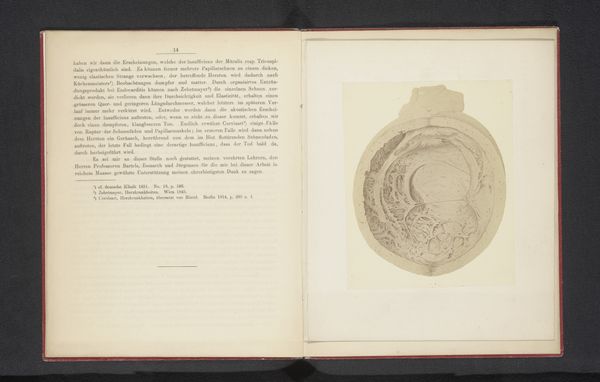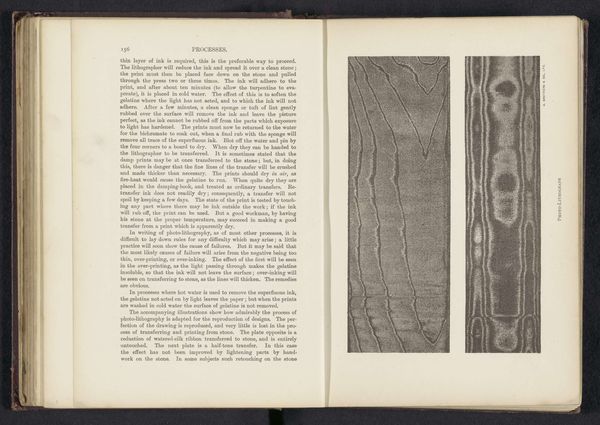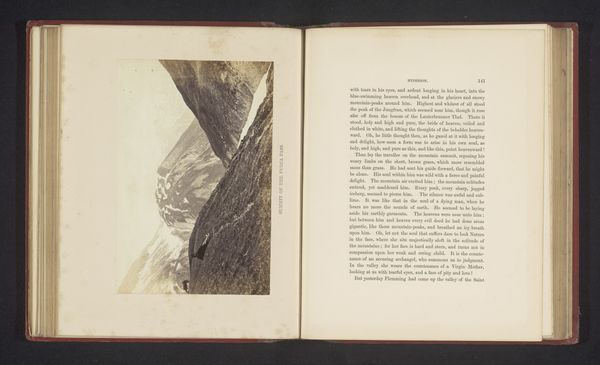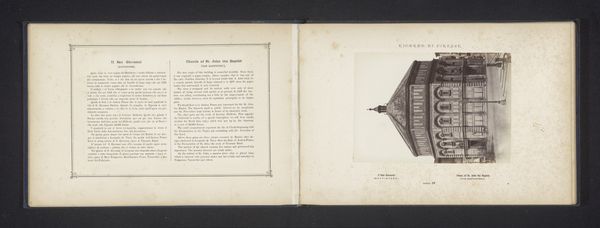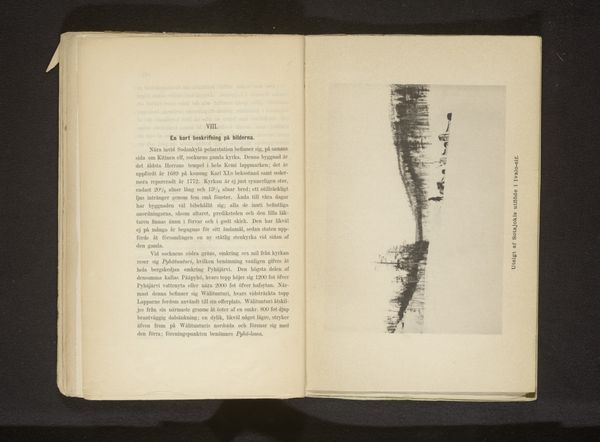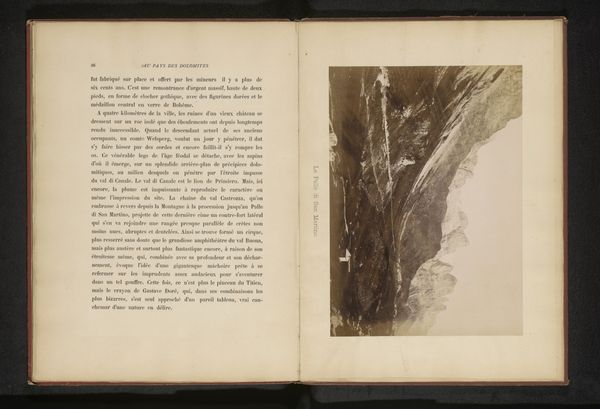
Gezicht op fort Santa Cruz en de haven van Oran, Algerije before 1893
0:00
0:00
julesgervaiscourtellemont
Rijksmuseum
print, photography, albumen-print
# print
#
landscape
#
photography
#
orientalism
#
albumen-print
Dimensions: height 82 mm, width 175 mm
Copyright: Rijks Museum: Open Domain
Curator: Before us we have an albumen print titled “View of Fort Santa Cruz and the Port of Oran, Algeria.” It was created before 1893 by Jules Gervais-Courtellemont. Editor: What strikes me immediately is the almost ghostly quality. The tonal range is so limited, creating this soft, almost dreamlike impression. The stark contrast between the dark spine and the faded image itself only reinforces this effect. Curator: Indeed. The photograph's orientalist style reflects the European fascination with North Africa during that period. It wasn't merely documentation; these images helped construct and circulate certain ideas about the region and its people. The strategic importance of Oran as a port undoubtedly played a role in its depiction. Editor: Observe how the composition directs your gaze. The lines of the fort seem to climb and disappear in the upper portion of the photo, a clear pyramidal structure lending the work both balance and a sense of height. There is also clear layering, the suggestion of a town with both harbor, infrastructure and architecture layered in this visual, fading tableau. Curator: Certainly, and prints such as this one could circulate widely in books and albums, shaping public perceptions of French colonial presence and aspirations in Algeria. Courtellemont's choice to showcase this fort may tell us about the authority and stability the colonizers wanted to portray. Editor: Despite the possible political narratives, there is such striking formal use of grayscale texture. The soft texture creates this ephemeral feeling; is it really stone or clouds? This evokes something far more transcendent about architecture that really impresses me, but leaves the location somewhat less important. Curator: So, we each draw something different, shaped by the period and technique but viewed through distinctly unique contemporary experiences. Editor: That tension between how the image was intended to be perceived and how it speaks to us now is precisely where art history thrives!
Comments
No comments
Be the first to comment and join the conversation on the ultimate creative platform.
